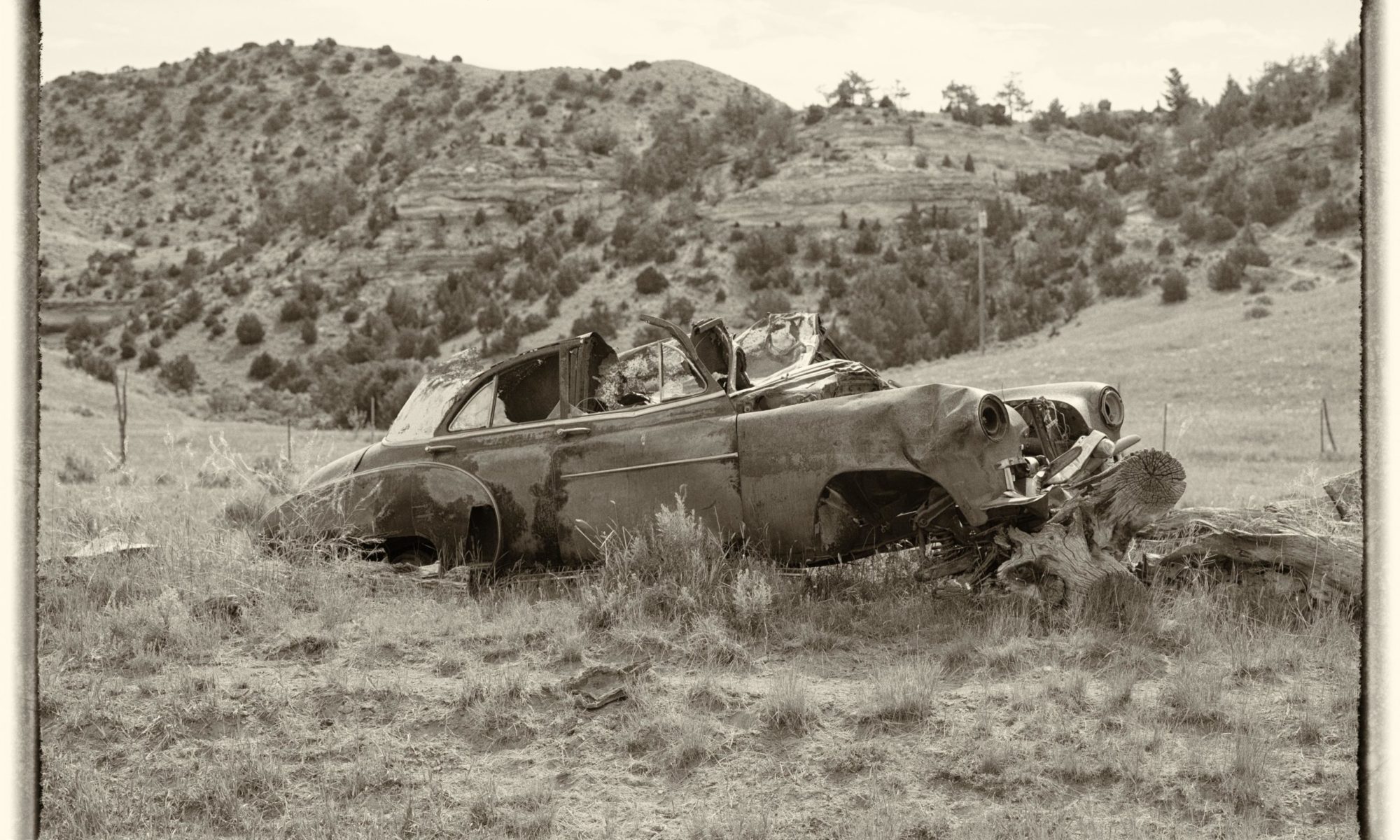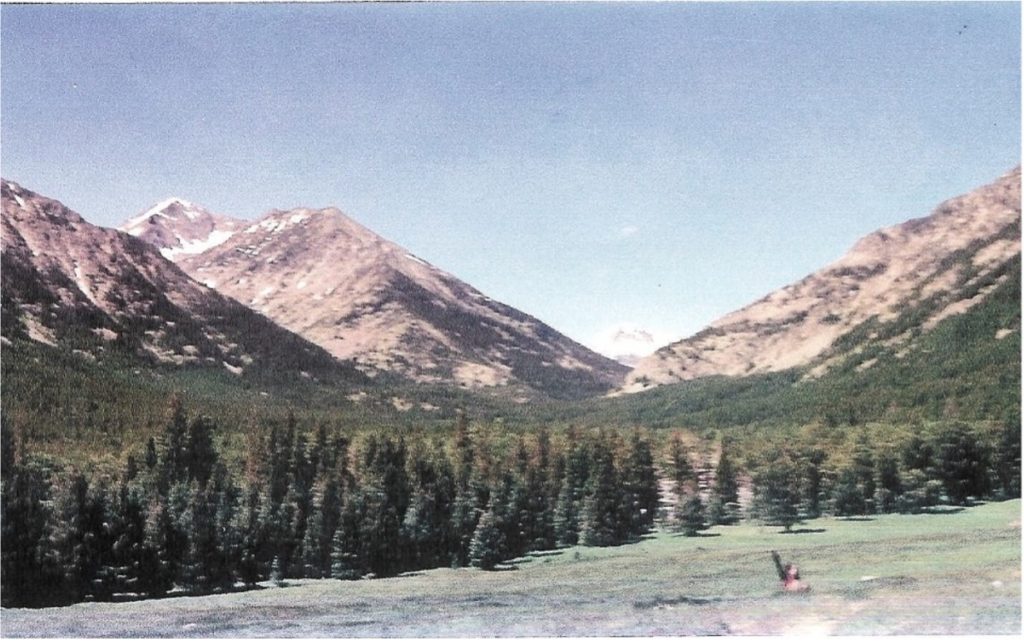One of the projects I assigned my dad several years ago was to write the history of all the buildings past and present at the Ward and Parker property in the Crazies. These written memories were the first part of that series. By my Daddy.
There are many places in this world which seem new to us, but someone has been there first. So it was even back up the creek on the Sweet Grass. I know of no one finding rings of rocks that had outlined teepee locations, but Indians had been there. There was a grave sized mound of dirt on the lower end of the rocky flat about 3/4th of a mile down the valley from where we lived. Mother thought it was an Indian grave. Nobody checked it out.
When I was ten or eleven years old I found a large buffalo skull and a brown-flint spear head that had fallen into the crevasse of an outcropping cliff beside the creek that ran out of the year round spring that furnished water for the house and sawmill that my father and his partner would build. Part of the flume they had built to carry water to the sawmill ran across the top of the outcropping cliff. If the skull and spearhead had not fallen into the cleft someone would have found it 10-12 years before I did. An Indian hunter was here and left his mark.
I carried the skull home and Barney Brannin used it for one of the porch decorations for the Brannin Lodge. I played around with the spearhead, throwing it and maybe pounding it with a rock. It ended up becoming lost. I think I know within fifty feet of where it is. In my mind I can see an Indian brave leaving his skull and spearhead as an offering to the Master of the Hunt. As late as the 1940’s there were still signs of early pioneers. Old logging trails wandered through the fire-killed trees near the Horseshoe Prairie. One could see the stumps of trees they had cut for the Northern Pacific Railroad. I saw a man’s name and a date carved in the base of a burned-out stump. I think the date was in the 1800’s. Someone said that ties cut for the railroad were floated down the creek in high water. Maybe so, Ed Brannin had floated saw logs down the Sweet Grass to his sawmill near Basin Creek.
C. M. Rein had a sawmill at the foot of the steep mountain west of Bruin Creek where Section 17 corners sections 18, 7, and 8. This may have been set up before 1900. We pastured cows and calves in this back corner of Section 17. I don’t think Barbara and Ralph have ever used it for a pasture. Sometimes the younger generation is wiser than their elders.
One place we knew as the “Logging Camp” was across the valley from Gommie’s Lake at base of Bruin’s Hump. Ed Brannin or C. M. Rein used this twenty or thirty years before Daddy and Ernest did in the 1930’s when they were sawing out the standing of fire-killed timber for house logs. The material from living trees would warp, and the bark on the green logs had to be peeled off. The dead timber made tough, non-shrinking timber that already had the bark removed from it. The “bunk house” cabin that nephew George uses was built from logs sawed from fire killed trees. Others went to John Moss and Carl Bussey houses on the west side of Big Timber.[1]
For years a rotten log and the remains of a cellar pit could be seen on each side of the road near the line fence west of Gommie’s Lake. The cellar pit and rotting base log was still visible in the 1930’s. Likely the place was used by the tie cutters of the 1800’s. This is where Bud Ward and Ernest Parker set up a cookstove and slept on the ground.
Ward and Parker’s had purchased a sawmill from Ed Brannin. They set it up at the far end of the open land up the valley from Gommie’s Lake.[2] This was in 1916. Setting up the mill was their first construction project. They dug a watering pit for the steam engine in the swampy ground beside the field and laid down a track for the sawmill carriage to run on. In this picture the sawmill would have been located just right of midpoint of the far edge of the field. The stump in the foreground seems to be pointing at it. The place for the cook stove would be at the tree line just off the picture.
[1]My Freshman year of high school Barbara, Kitty and I boarded with a Mrs. Smith in the Moss house. Mrs. Moss’s green trimmed Kalamazoo kitchen range helped pay for the Moss house.
[2] Nearby a rotted log showed where a cabin once stood. Nearby was a pit and mound of dirt where a root cellar had been built. Likely these were remains of a camp used in the late 1800’s by workers cutting ties for the Northern Pacific Railroad.


Fascinating